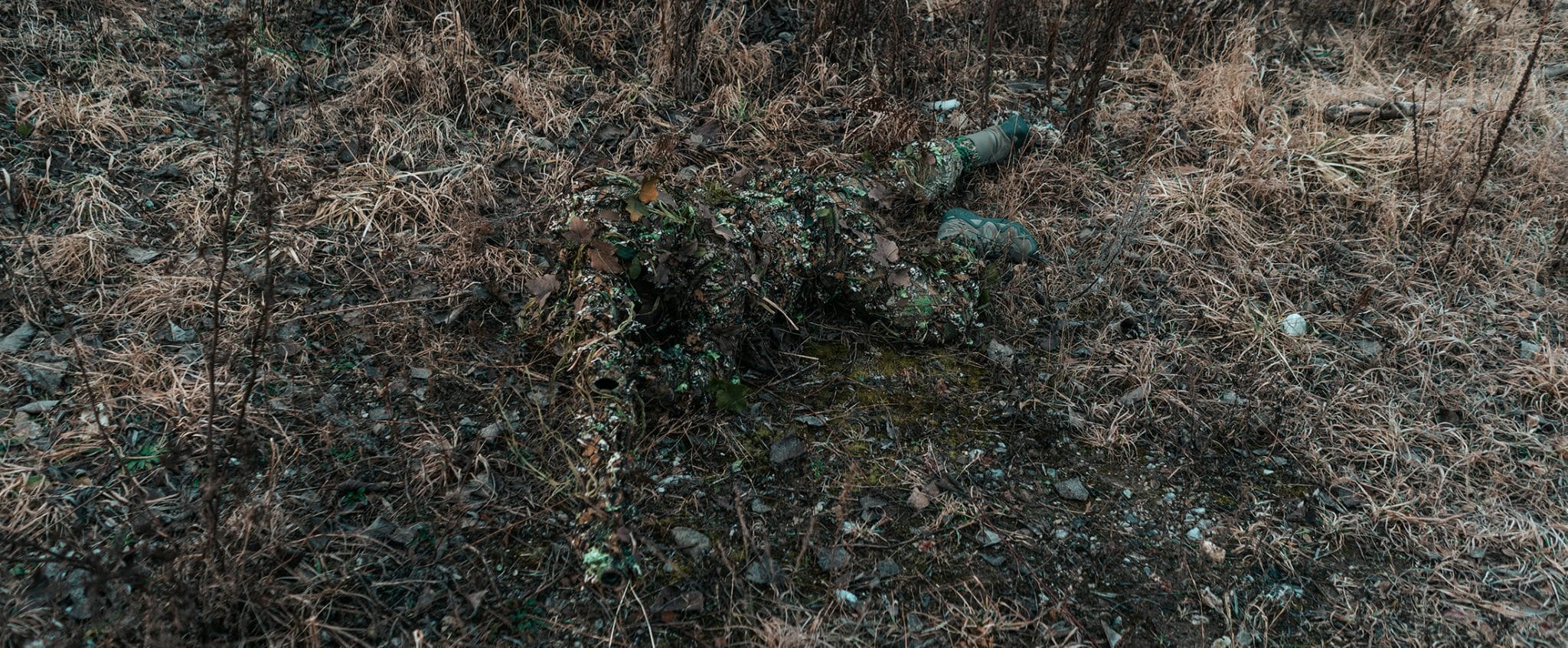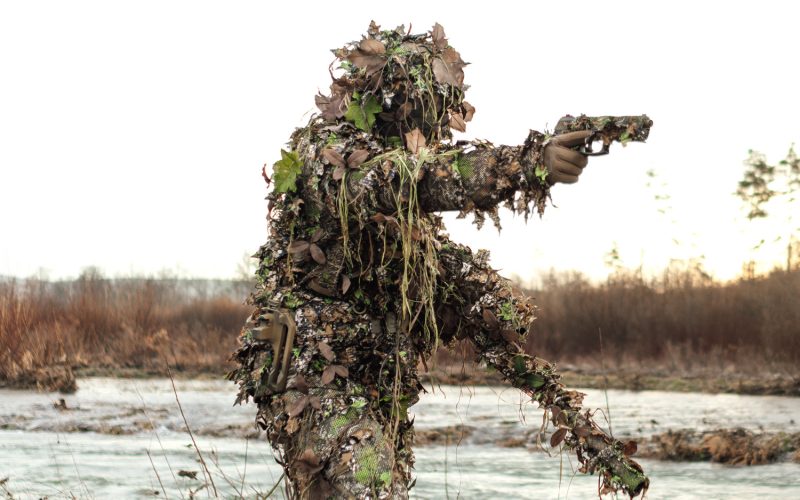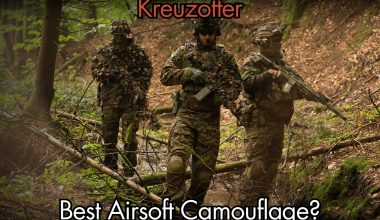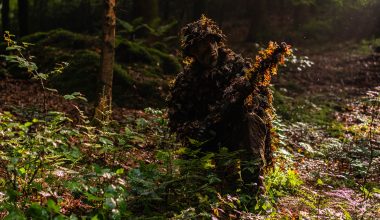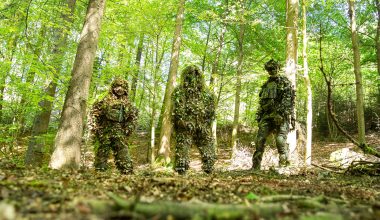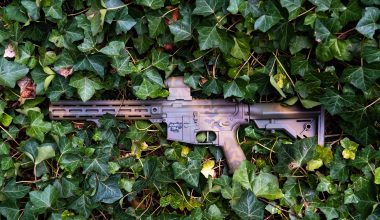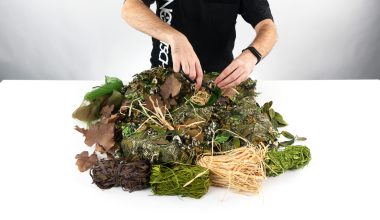When it comes to airsoft sniping, besides a rifle and tactics, the ability to conceal himself is a sniper’s daily bread. That was a reason why we felt the urge to come up with a Ghillie system. One that would be both practical to use and efficient in most environments.
Choosing patterns
But how did we choose a color/pattern scheme suitable for most Ghillie users? Firstly, we had to get as many interesting patterns as you can get from the market. We tested the color grading, pattern concealment and looked at what was sold the most.
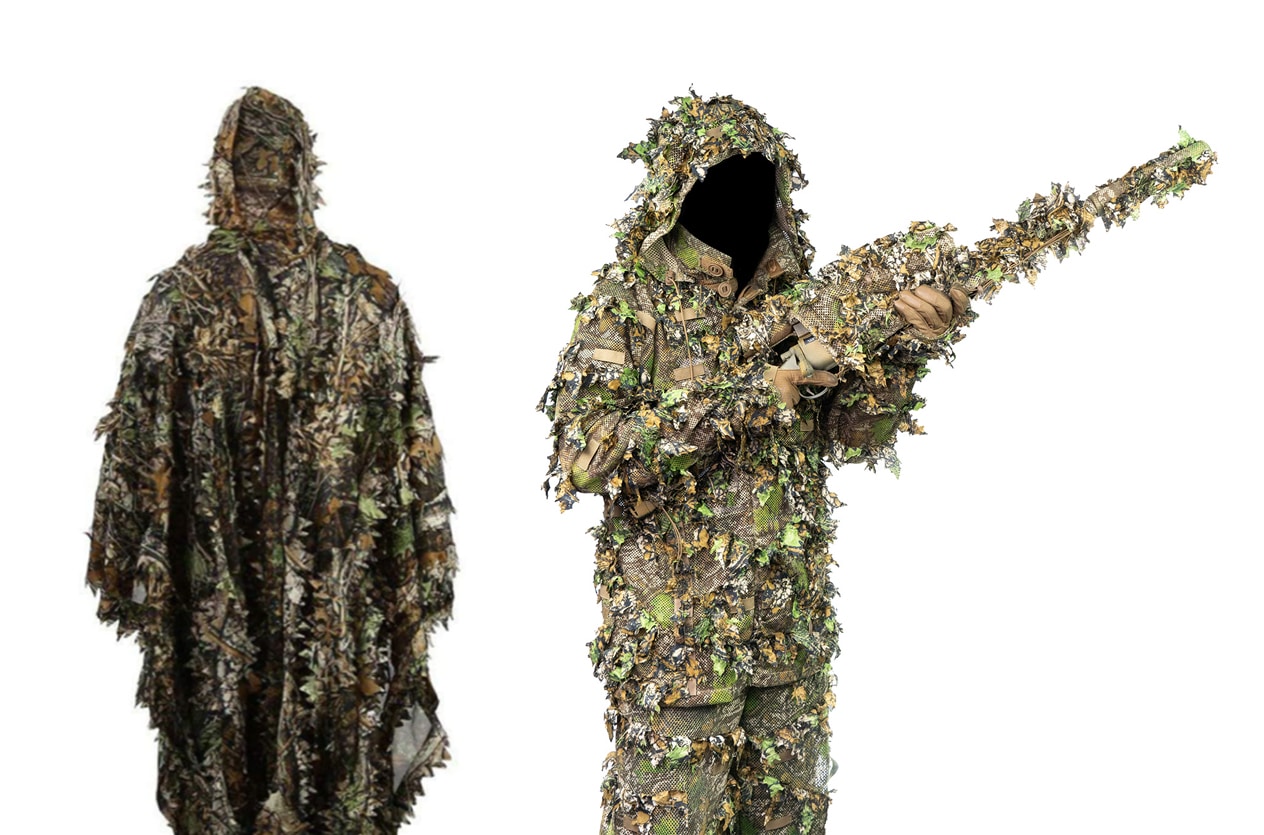
Conclusion? For the airsoft environment, a real tree-like pattern would work the best! Strangely enough one of the most sold similar patterns was from amazon.
The Amazon suit (left) compared to the one developed by Novritsch Team (right)
These amazon suits mostly use a variant of the pattern called „Innovation Camouflage“ by „Deerhunter“. It looked decent but we still saw room for improvements, allowing us to truly conceal the suit in the environment. We have altered the color scheme and gave our suit a different setting and rapport.
Picking colors
Having prepared our first pattern prototype, it was time to take it outside and start playing with color schemes. With multiple variants (as seen in the picture), the Austrian autumn scheme turned out to be the most effective of them all.
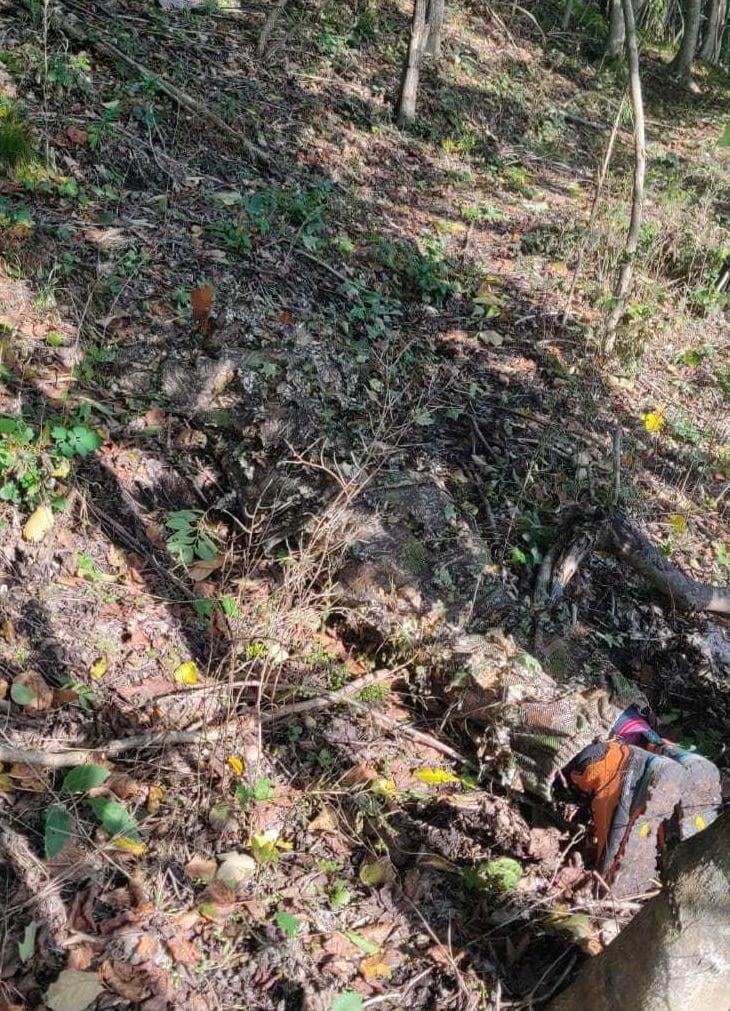
Our colleague testing the prototype Novritsch Ghillie.
When composing colors, we tried to get the green tones close to our own LC1 Fern 3D Leaves. These are the most common in the temperate climate zone. To go with it, the added brown tones are like those used in camo patterns in the 1980s. These extra tones give the whole suit a much-needed contrast.
In addition, we implemented a very dark brown to simulate shadows forming under the branches and leaves. Finishing off, we also purposely left very bright, almost white spots in the pattern.
That might be surprising to most, but it has two purposes.
Firstly, this helps to break up the form and silhouette of the wearer. Secondly, it gives crafters the ability to dye these spots according to their environmental needs.
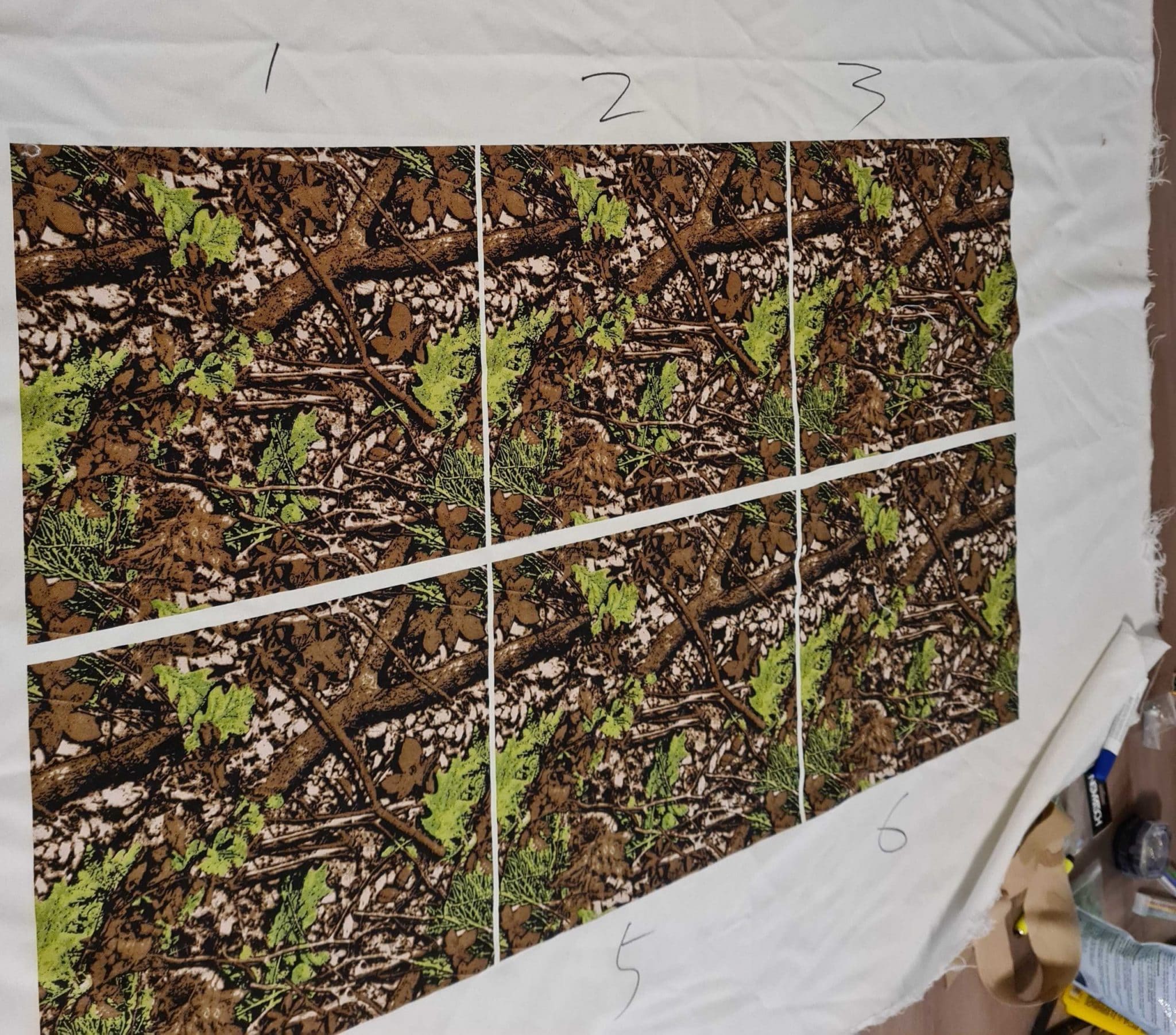
Different pattern variants were considered for the Ghillie.
All this color testing combined with a new printing process (cold transfer) gave us a very good camo mesh that serves as a base for our ghillie suits.
Furnishing the Ghillie Suit
However, only running a mesh suit would not do the trick. That is why we wanted to make the suit 3D. When preparing the leaf material, we ran into some unpleasant issues, both in terms of color and material.
We started with very bright and almost juicy looking colors. Oh dear, they didn’t work at all. We had to tune them down and subdue them. With the material, we went from almost a silk-like fabric to a much stronger and heavier material similar to softshell.
The original Amber 3D leaf material was almost noiseless and didn’t add much weight. But this made it prone to tearing and ripping. So, with Batch 2, we made the leaves notably sturdier. Even if it meant that the wearer would be a bit noisier. The trade-off was well worth it. Furthermore, the new material used for the 3D leaves was better for our sewing technique and added a real 3D effect.
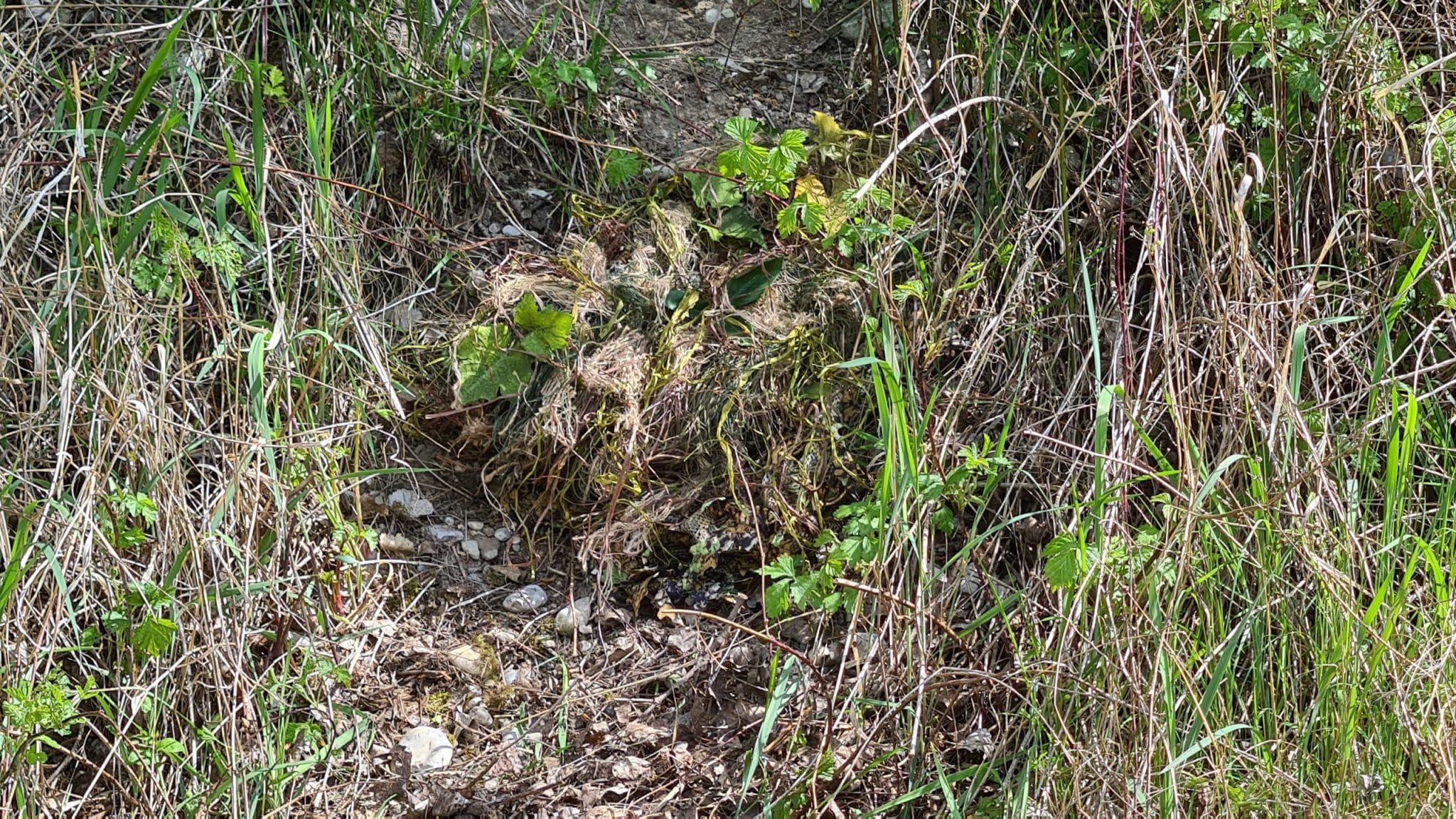
Our Ghillie with extra attachments.
Key Learnings
All these steps together gave us the Novritsch Ghillie Suit. In our opinion and personal experience from the field, this suit works very well in our climate zone. Besides, it also works perfectly as a base for customisation. So if you wish to become truly invisible to your enemies, we definitely recommend you get the suit and add extra leaves and stuff similar to the local vegetation. Just do not let anyone accidentally step on you…
